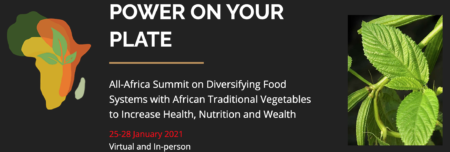- CWR and the Dasgupta Review.
- New project on veggies in Africa.
- ABS rules are important.
- Webinar on breeding low-emitting cattle, 25 February.
Brainfood: Corona, Restoration, Georeferencing, Bee decline, Mustard breeding, Banana seeds, Micronutrient decline, Potato micronutrients, GWAS, Trade, Deforestation alerts, Review method
- Rapid assessments of the impact of COVID-19 on the availability of quality seed to farmers: Advocating immediate practical, remedial and preventative action. Structural weaknesses ruthlessly exposed.
- Initial Investment in Diversity Is the Efficient Thing to Do for Resilient Forest Landscape Restoration. Spend the money on securing diverse seeds up front, you cheapskates. No word on what the effect of the pandemic.
- Ten golden rules for reforestation to optimize carbon sequestration, biodiversity recovery and livelihood benefits. Right seeds, right species, right place, the right way. But save forests first.
- The impact of near-real-time deforestation alerts across the tropics. Getting alerts saves forests, especially in protected areas, but only in Africa.
- Integration of georeferenced and genetic data for the management of biodiversity in sheep genetic resources in Brazil. Travel 300 km for a genetically different sheep. I wonder if it’s the same for trees.
- Worldwide occurrence records suggest a global decline in bee species richness. 25% fewer species in GBIF in past 25 years. Yeah but there may be alternative explanations for that, as a bee taxonomist points out. Non-Twitter link available too.
- Investigating genetic relationship of Brassica juncea with B. nigra via virtual allopolyploidy and hexaploidy strategy. Wild relative could be used to synthesize some really cool mustards.
- Seed storage behavior of Musa balbisiana Colla, a wild progenitor of bananas and plantains – Implications for ex situ germplasm conservation. Orthodox, but difficult to regenerate.
- Mineral nutrient composition of vegetables, fruits and grains: The context of reports of apparent historical declines. No evidence for systematic declines in micronutrient concentrations.
- A Study on the Biodiversity of Pigmented Andean Potatoes: Nutritional Profile and Phenolic Composition. Lots of diversity in micronutrients in traditional landraces. No word on temporal changes.
- Status and prospects of genome‐wide association studies in plants. Dissecting complex traits has never been easier, and is getting easier. It says here.
- A review of the interactions between biodiversity, agriculture, climate change, and international trade: research and policy priorities. Policy priorities? Increased recognition of international trade in biodiversity targets, goals, and policy; and increased communication of the impacts of food on biodiversity.
- The Impact of Diversified Farming Practices on Terrestrial Biodiversity Outcomes and Agricultural Yield Worldwide: A Systematic Review Protocol. Looking forward to this one.
Nibbles: Roman cuisine, Jewish cooking, Seed sources, Prof. Moreno, English gardens, Cassava
- Very expensive new book on Roman and old reasonable one on Jewish cooking for that special person in your life.
- Places you can buy heirloom seeds for that special person in your life.
- The special person that is the new head of the UPM Plant Germplasm Bank in Spain.
- I learned from this article on a newly excavated Tudor garden about a pretty special grapevine.
- Cassava is pretty special, despite its reputation.
Nibbles: Seed edition
- Seed stories.
- Heterogenous seeds book chapter.
- Heritage seeds in Britain book.
- Seed app. For tricot trials.
- Seed Treaty ratified in Nigeria.
Power on your plate, served up
The All-Africa Summit on Diversifying Food Systems with African Traditional Vegetables to Increase Health, Nutrition and Wealth opens today, Monday, January 25 at 09:00 Tanzania time.
All the information is on the WorldVeg website.
There’s a webinar, of course, if you’re into the whole interactivity thing.
There’s a Youtube channel too if you miss anything.
